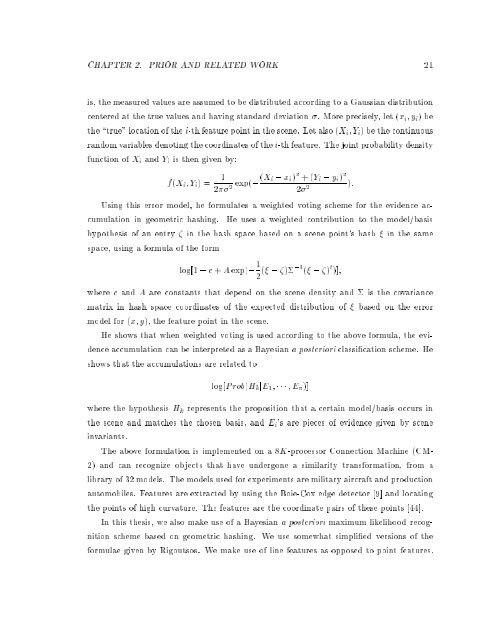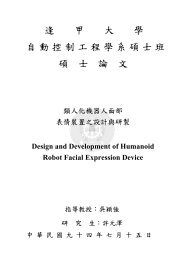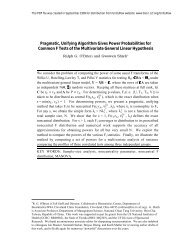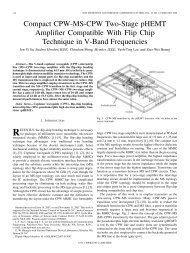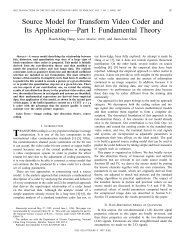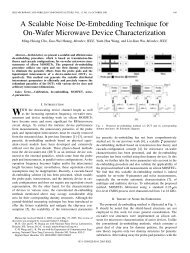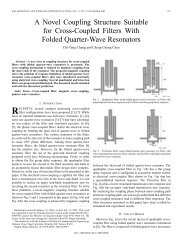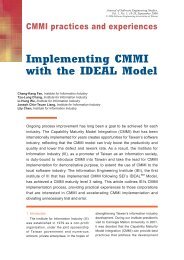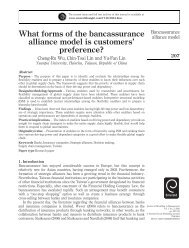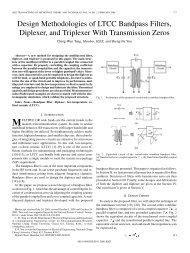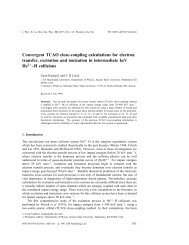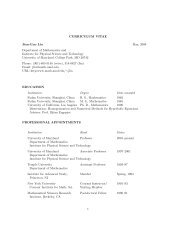A Probabilistic Approach to Geometric Hashing using Line Features
A Probabilistic Approach to Geometric Hashing using Line Features
A Probabilistic Approach to Geometric Hashing using Line Features
Create successful ePaper yourself
Turn your PDF publications into a flip-book with our unique Google optimized e-Paper software.
CHAPTER 2. PRIOR AND RELATED WORK 21<br />
is, the measured values are assumed <strong>to</strong> be distributed according <strong>to</strong> a Gaussian distribution<br />
centered at the true values and having standard deviation ç. More precisely, let èx i ;y i èbe<br />
the ëtrue" location of the i-th feature point in the scene. Let also èX i ;Y i è be the continuous<br />
random variables denoting the coordinates of the i-th feature. The joint probability density<br />
function of X i and Y i is then given by:<br />
fèX i ;Y i è= 1<br />
2çç 2 expè,èX i , x i è 2 +èY i , y i è 2<br />
2ç 2 è:<br />
Using this error model, he formulates a weighted voting scheme for the evidence accumulation<br />
in geometric hashing.<br />
He uses a weighted contribution <strong>to</strong> the modelèbasis<br />
hypothesis of an entry ç in the hash space based on a scene point's hash ç in the same<br />
space, <strong>using</strong> a formula of the form<br />
logë1 , c + A expè, 1 2 èç , çèæ,1 èç , çè t èë;<br />
where c and A are constants that depend on the scene density and æ is the covariance<br />
matrix in hash space coordinates of the expected distribution of ç based on the error<br />
model for èx; yè, the feature point in the scene.<br />
He shows that when weighted voting is used according <strong>to</strong> the above formula, the evidence<br />
accumulation can be interpreted as a Bayesian aposteriori classiæcation scheme. He<br />
shows that the accumulations are related <strong>to</strong><br />
logëProbèH k jE 1 ; æææ;E n èë<br />
where the hypothesis H k represents the proposition that a certain modelèbasis occurs in<br />
the scene and matches the chosen basis, and E i 's are pieces of evidence given by scene<br />
invariants.<br />
The above formulation is implemented on a 8K-processor Connection Machine èCM-<br />
2è and can recognize objects that have undergone a similarity transformation, from a<br />
library of 32 models. The models used for experiments are military aircraft and production<br />
au<strong>to</strong>mobiles. <strong>Features</strong> are extracted by <strong>using</strong> the Boie-Cox edge detec<strong>to</strong>r ë9ë and locating<br />
the points of high curvature. The features are the coordinate pairs of these points ë44ë.<br />
In this thesis, we also make use of a Bayesian aposteriori maximum likelihood recognition<br />
scheme based on geometric hashing. We use somewhat simpliæed versions of the<br />
formulae given by Rigoutsos. We make use of line features as opposed <strong>to</strong> point features.


